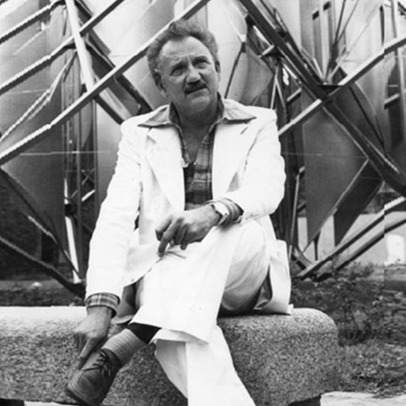
Alejandro Otero
Biography of Alejandro Otero
Alejandro Otero, born in Bolívar, Venezuela, in 1921 and passing away in Caracas in 1990, stands as one of the most influential Venezuelan artists of the 20th century. His acclaim arose from his innovative exploration of the interplay between light, space, and perception in art.
As his career progressed, Otero delved into the realm of civic sculptures, driven by his enduring fascination with the spatial and social dimensions of artworks. For Otero, art represented a deeply personal drama wherein modern humanity could find reflections of itself. In that regard, he was among the artists who contributed to the creation of artworks for the Central University City of Venezuela.
Otero's commitment to the arts extended to his role as the Vice President of the National Institute of Culture and Fine Arts of Venezuela from 1964 to 1966. Additionally, in 1971, he was awarded the prestigious Guggenheim Memorial Foundation scholarship, which allowed him to pursue further inquiries into sculptures in public spaces at the Massachusetts Institute of Technology. Alejandro Otero's art and vision left an indelible mark on the world of contemporary art, both within Venezuela and beyond.
Alejandro Otero's Art Style
Otero's artistic journey began with studies in Painting, Sculpture, Glassworks, and Art education at the National School of Arts in Caracas, spanning from 1939 to 1945. In 1946, he received a scholarship from the State that enabled him to embark on a transformative artistic journey to Paris.
His "Cafeteras" series marked a significant shift in his artistic trajectory, as he departed from Figuration and embraced Geometric Abstraction. This transition led him to become a member of "Los Disidentes," a collective of Venezuelan artists who resided in France and were committed to revitalizing the artistic landscape of their homeland.
In 1955, Otero introduced his seminal "Coloritmos" series, characterized by modular rectangular paintings created using automotive lacquer applied with spray guns onto wooden or plexiglass surfaces. The intent was to immerse the viewer in a constructive process where rhythms and spaces fused, extending beyond the confines of the canvases themselves.
Years:
Born in 1921
Country:
Venezuela, Piar
Gallery: